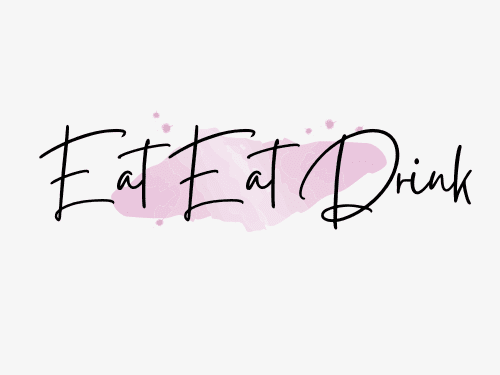How do you sleep with a feeding tube?
Sleep is necessary to heal and grow, so sleeping comfortably is a huge deal! Now some children have no problem sleeping with a feeding tube in their stomach, and some have complications. There are also lots of adults that sleep laying on their back or on their side, but what about children and adults that just want to sleep on their stomach? Well, that can cause some pain or issues, but we have some tips and tricks for that!

Can you sleep on your side with a feeding tube?
Yes! As long as you are not uncomfortable or in pain, you can definitely sleep on your side. What do you do if you are uncomfortable or want to sleep on your stomach?
Laying on your side or stomach can cause pain from pressure being pushed onto your feeding tube site. By using a padded belly band, the padding allows the pressure to be distributed more evenly, and allows you to sleep comfortably again on your side or your stomach!
One of my favorite messages from an adult customer was about how she was so excited to be able to sleep on her stomach again. She had always found this position to be the most comfortable and lead to deeper and longer sleep. After having a feeding tube surgically placed, she no longer was able to sleep in this position without pain. After using a flannel and fleece padded belly band, she was now able to sleep on her stomach and not experience any more pain, and no longer worried about the sheets and blankets snagging on her feeding tube site! I jumped for joy after reading this message, because it had never occurred to me that this could be an issue for adults with feeding tubes! I was so thankful that the belly bands offered an inexpensive solution and was able to give her comfort again!

Overnight Tube Feeding for Children
Continuous overnight feeds are pretty normal for babies and toddlers that need to get enough calories in order to grow and gain weight. Night feeds can bring up some extra challenges. Here are some tips and tricks to help your baby and active toddler:
10 Nighttime Tips and Tricks for Feeding Tubes
- Most kids do a nighttime routine that includes pajamas, and we suggest using these pajamas to help secure the line for safe feeds. If they are babies upto to size 24 months, definitely invest in snap or button up pajamas. If they are in a size 2T or higher, consider modifying zip pajamas to make them more feeding tube friendly!
- The typical set up for a baby and toddler on continous feeds includes a feeding tube pump (kangaroo or joey) and an IV pole. We found that placing the IV pole at the foot of the bed and putting the feeding tube coming out near the child’s legs, made it less likely for the tubing to get near their face or neck. No one wants to get tangled up in tubing or have the tubing wrap around a child’s neck.
- If your baby or toddler is a big mover at night, you may have to make some modifications to allow for safer sleep. Some parents use pool noodles or insulation tubes to cover the tubing at night. Please use caution with this because if pool noodles are chewed on they do degrade and shed plastic which can be swallowed. I would definitely wrap the noodles with duct tape to keep them from being chewed on. I have seen parents cut the noodles into 3-4 pieces as well to make it more flexible than just 1 long piece,
- If your child is very curious about their tubing and the connection to the feeding bag, this can cause you to feed the bed! In order to keep this connection secure, consider using a port connection cover. Here are a bunch available on Etsy.
- It is totally normal once your child learns to roll over, that they want to sleep on their stomach. If this position is uncomfortable for them, you may consider using a padded belly band to help disperse the pressure on their belly.
- If your child is getting to be too big for a crib or playpen, it will be time to upgrade their bed. We opted for a toddler bed on the ground with no frame. We also needed a way to keep my daughter from getting up in the middle of the night and walking away from her IV pole, so we found a flexible baby gate option on Amazon that made a nice little circle around her bed. She actually loves this space and will ask to go in and lay on her bed when she is upset or overwhelmed. It is her very own personal space. You can also use a bed tent over a toddler bed. I wasn’t a huge fan of this idea because it was harder to see my child and most seemed a little flimsy.
- If your child is on bolus style of feeds overnight, go ahead and attach their extenstion to their feeding tube button even though their feeds may not start for a few hours. This way you don’t have to wake up and undress your child when it is late at night to set up their feeds. You can just attach the feeding tube bag port to the extension and start their feeds with very little disturbance to their sleep.
- If your child is on continuous feeds over night for the whole night, look at the hang time for your formula or food. Most formulas have a hang time of 4 to 12 hours. You can extend this time by putting an icepack next to the food bag to keep the food at a safe temperature. We used Pediasure and it was stored at room temperature so I was ok with hanging it without an icepack. These insulated food bag covers are a game changer if your baby is still getting breastmilk that is very temperature sensitive!
- If your toddler has outgrown their IV pole or it has become more of a problem than a solution, you can hook up their feeds using a feeding tube backpack placed at the foot of the bed, or use a Flying Squirrel holder!
- If night time feeds are truly too cumbersome to handle, and no one is getting any sleep, it may be time to contact your medical team. In some cases, it is better to adjust your feeding schedule to just during the daytime. Sleep is super important for healing and for growth, so a child must get a enough sleep. If constant wake ups, feeding the bed with formula, and pump errors are keeping your little one from getting a decent night’s sleep, it may be more beneficial to adjust the feeding routine.

Conclusion
Sleep is an essential bodily function and being able to sleep comfortably is a huge achievement for some. Hopefully we have been able to share enough tips and tricks to help you or your child reap all the benefits of a restful night’s sleep.
Please feel free to reach out to us if you have any questions or if you have any tips or tricks that helped for night night feeding and sleeping!
Good Night!







